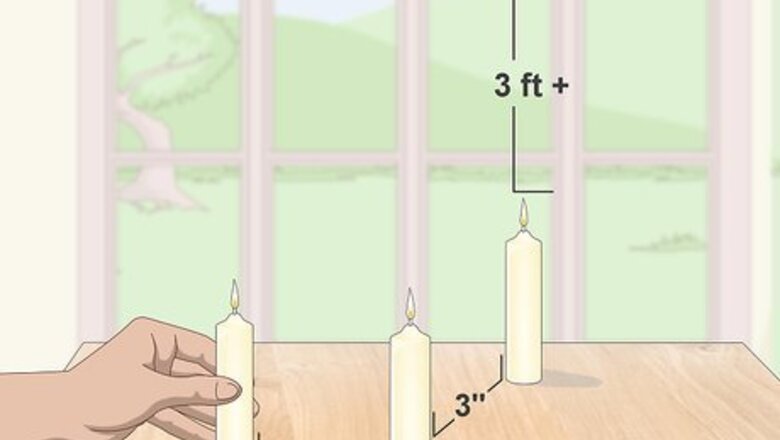
views
Setting Up
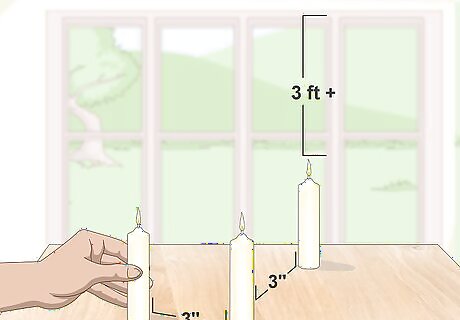
Place the candle in a well ventilated room. There should be at least 3 ft (910 mm) between the candle flame and the surface above it. If burning multiple candles, place them at least 3 in (76 mm) apart from each other. This prevents the candles from creating their own drafts.
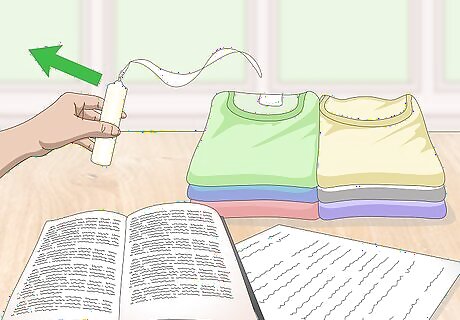
Remove your candle from anything flammable. Flammable items include: hair, clothing, decorations, books, paper, carpet, furniture, bedding, or curtains. Tie up any drapes or curtains, and remove any excess fabric.
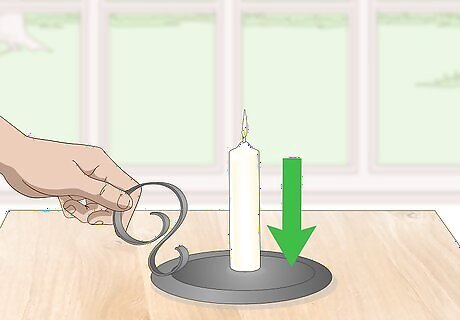
Put your candle in a non-flammable candle holder. Make sure the candle holder you use is designed for the particular candle style and large enough to collect molten wax. Always place your candle on a heat-resistant surface. You can also use a non-flammable hurricane glass.
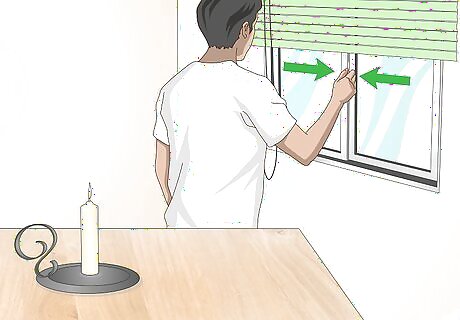
Check for any open windows or drafts. Do not put your candle under an open window. Drafts or gusts of wind can potentially carry the flame and start a fire. If your candle is near an open window, close the window or move the candle. If your candle is in a drafty spot, relocate your candle somewhere without any drafts.
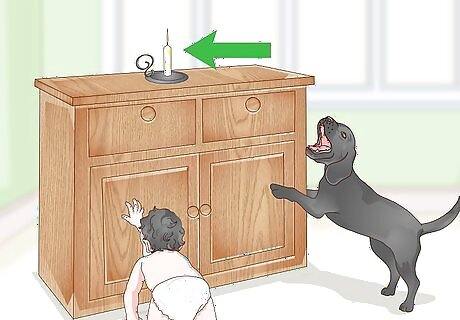
Place your candle away from the reach of children or pets. Children or pets can accidentally hit the candle and create a fire. Candles, matches, and lighters should always be out of the reach of children or pets.
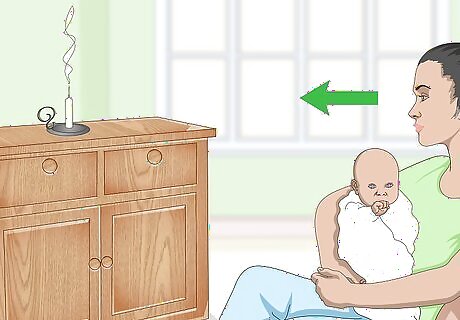
Keep your candle in sight at all times. You never want to leave a candle unattended. Staying within sight of the candle ensures that your property, your loved ones, and yourself are not in risk. It is helpful to inform others in your home when you are burning a candle.
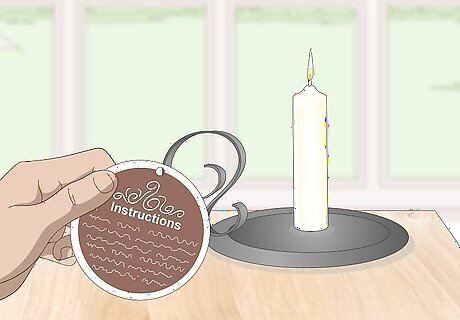
Follow the candle manufacturer's suggestions. Always follow the candle manufacturer's recommendations on proper candle holders, burn times, and extinguishing. Do not exceed manufacturer suggestions. Make sure you read all of the directions on your candle before use. Every candle is different, and these are only guidelines for use.
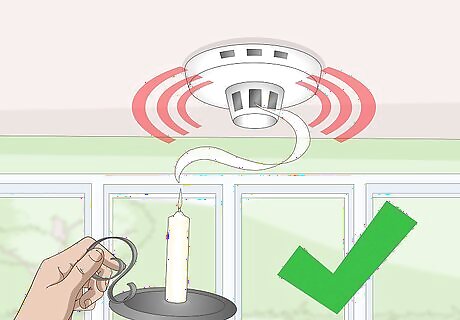
Perform routine fire detector tests. Smoke and fire detectors should be inspected annually to ensure they are working properly. Performing self-maintenance or professional reviews is important to make sure the devices are working properly to prevent any fires.
Lighting Your Candle
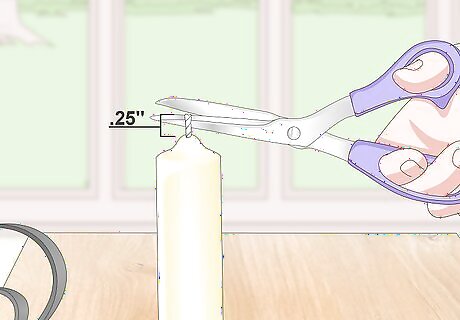
Trim your candle's wick to about .25 in (6.4 mm). The wick should remain centered and vertical to ensure it burns correctly. The wax pool should be free of any wick trimmings, matches, or other combustible debris.
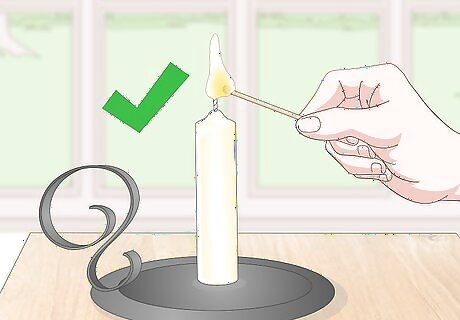
Use a match or lighter to light the candle wick. With your index finger and thumb, hold the lit match to the wick of the candle. The wick should ignite in a few seconds of touching the flame. Try tilting the candle slightly to one side to make more room for your fingers and/or the match. If you are having trouble lighting the wick, try holding the candle with your longest two fingers (index and middle finger). Longer matches and extended-length barbecue lighters also work well to light tricky candles. If you are unable to reach the wick with a standard match or lighter, use a piece of spaghetti. Light one end, and use this as your match. Because the spaghetti is easily extinguished and does not burn for long, it can act as a replacement for the lighter or match.
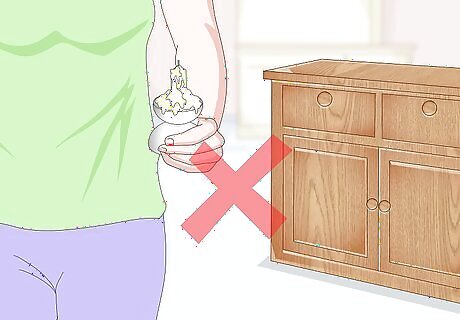
Keep your candle stationary. Never move or touch the candle once the flame is ignited or when the wax is liquefied. The candle holder will become very hot.
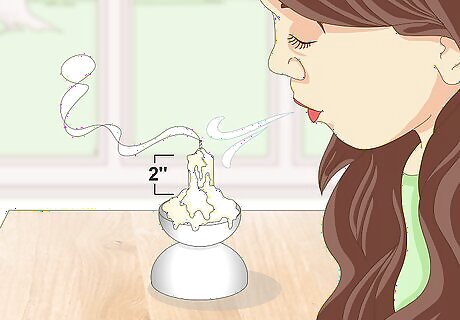
Put out the candle when candle burns through. A good rule of thumb is to extinguish the candle when 2 in (51 mm) of wax is left or .5 in (13 mm) of wax remains in the container. This ensures the wick stays vertical and the burn is consistently under control. Put out the candle if the flame becomes too high or flickers repeatedly.
Extinguishing the Flame
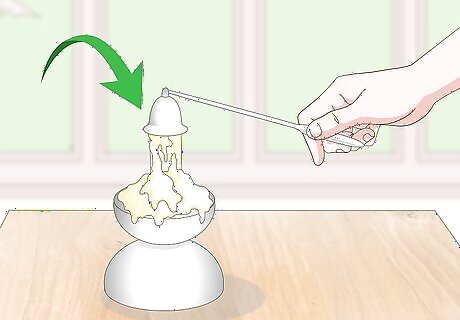
Put out the flame with a candle snuffer. A candle snuffer safely starves the flame of oxygen and assures the flame goes out without splattering any wax. If you do not own a snuffer, you can use a metal spoon to extinguish the flame. Do not use water to put out a candle. Mixing cold water and hot wax can result in wax splatters and possibly burns. The cold water can also shock the glass, resulting in broken candle holders. Do not use a knife or sharp object to remove wax drippings. This could scratch, weaken, or break the glass.
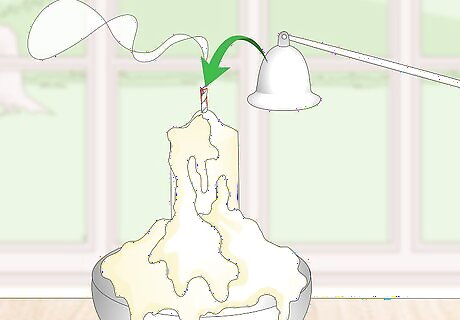
Ensure the flame is fully extinguished. Before leaving the room, make sure the ember is not glowing and the candle is fully out. If there is still a bit of red ember burning, use the candle snuffer again. Do not touch the candle until it has cooled completely.
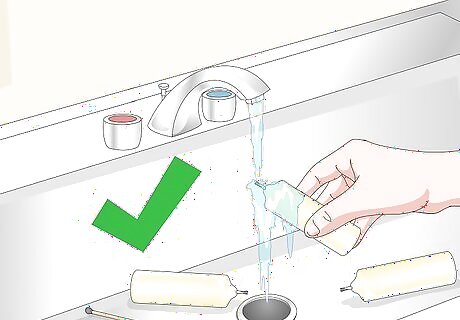
Dispose of your candles and flame sources properly. If the wick is less than .25 in (6.4 mm), it is unfit for burning. The candle should be disposed of at this time. When lighting a match, run each match under water before discarding to make sure the flame is entirely extinguished. Place all previously lit candles in the sink or metal tray for extra precaution.




















Comments
0 comment